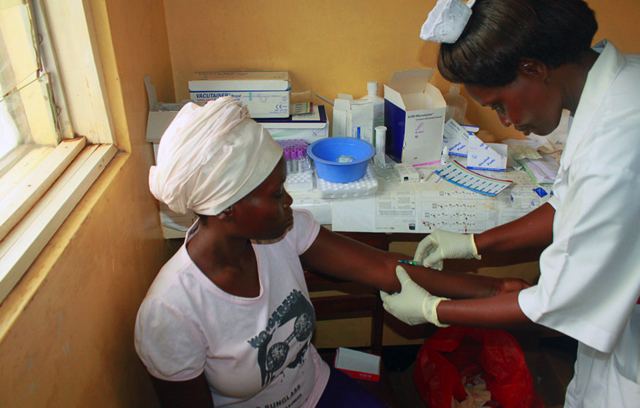
With more than 600,000 AIDS-related deaths each year over the past four years, proven interventions must be implemented quickly to save lives
Harare, Zimbabwe | THE INDEPENDENT | With timely and effective diagnosis and treatment, people living with advanced HIV can survive cryptococcal meningitis, the second leading cause of AIDS-related mortality after tuberculosis. A new report released at the 22nd International
Conference on AIDS and Sexually Transmitted Infections in Africa (ICASA) in Harare, Zimbabwe, highlights the need for better uptake by national authorities of scientific evidence shown to reduce deaths.
Entitled Unchecked deaths: protecting people living with HIV from cryptococcal meningitis, the report shows an immense lack of alignment with WHO guidelines across five essential interventions for cryptococcal meningitis – from screening to treatment of the disease. While policy alignment was found to be better in Eastern and Southern Africa than in Western and Central Africa, none of the 35 countries assessed had fully adopted WHO’s recommendations for cryptococcal meningitis and advanced HIV disease (AHD).
“We are seeing encouraging progress and mobilization, for example, with recent advances in cryptococcal meningitis prevention, testing, and treatment incorporated in the 2022 World Health Organization (WHO) guidelines in record time,” said Dr Justine Odionyi, Head of HIV at the non-profit research and development organization Drugs for Neglected Diseases initiative (DNDi). “But given that cryptococcal meningitis is responsible for a fifth of all AIDSrelated deaths, countries urgently need support in adopting these guidelines and prioritizing their implementation in order to reach the target of ending deaths from cryptococcal meningitis by 2030.”
The fungus Cryptococcus is the cause of cryptococcal meningitis – a major opportunistic infection in people living with HIV with CD4 counts below 200. Infection often leads to meningitis, the dangerous swelling of the membrane surrounding the brain and spinal cord. In 2019, cryptococcal meningitis accounted for an estimated 15% of the 690,000 HIV-related deaths, globally.
“Cryptococcal meningitis among people living with HIV remains underrecognized, underdiagnosed, and under-treated – resulting in a death rate estimated to be as high as 70% in Africa, compared to 20-30% in high-income countries,” said Sharonann Lynch, Co-Director of the Center for Global Health Policy and Politics (CGHPP), which tracks HIV policies for 194 countries as part of its HIV Policy Lab (www.hivpolicylab.org).
With support from DNDi, the HIV Policy Lab launched an AHD Dashboard, which maps national guidelines for AHD and cryptococcal meningitis across 35 African countries.
“We hope our dashboard can serve to help monitor progress and encourage countries to fast-track full adoption of life-saving interventions against AHD,” added Sharonann Lynch. “Our goal is to reduce the time lag between the generation of scientific evidence and policy adoption by national health authorities.”
The report’s authors also called for global health actors and donors to support countries to reform policies and implement life-saving interventions as recommended by WHO.
The report documented inadequate levels of policy alignment across all five WHOrecommended essential interventions for AHD and cryptococcal meningitis:
Diagnosing AHD: WHO recommends CD4 testing for all people living with HIV who are entering and re-entering HIV care, including ART, to identify people in need of the AHD package of care, including cryptococcal meningitis prophylaxis. Only 14 countries were found to be in alignment. In total, 31 countries’ national guidelines included baseline CD4 testing for entering – but not re-entering – HIV care.
Cryptococcal meningitis screening: Although WHO recommends a point-of-care rapid test to detect the cryptococcal antigen (CrAg) for all people living with AHD, only 24 countries were in alignment.
Prevention and pre-emptive treatment: WHO recommends fluconazole to prevent the development of cryptococcal meningitis for people living with HIV who test CrAg positive and for people living with AHD until the CD4 count increases above 100 cells/mm3. Preemptive and prophylactic fluconazole therapy is adopted by only 13 and 11 countries, respectively.
Diagnosing cryptococcal meningitis: WHO recommends a lumbar puncture to confirm cryptococcal meningitis diagnosis for people who display symptoms of meningitis. Only 15 countries are aligned with this recommendation.
Treating cryptococcal meningitis: WHO provides options for treatment regimens and strongly recommends a preferred single high dose (10 mg/kg) of liposomal amphotericin B (LAmB) followed by 14 days of oral maintenance therapy with flucytosine and fluconazole. This regimen is more optimal as it is better tolerated, has fewer adverse effects, and is associated with shorter hospital stays, compared with the other options. Only 5 countries include this optimal regimen, while 2 countries include the least optimal regimen of fluconazole-based monotherapy.
****
Center for Global Health Policy and Politics
 The Independent Uganda: You get the Truth we Pay the Price
The Independent Uganda: You get the Truth we Pay the Price



